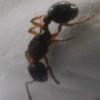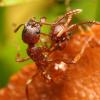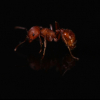No, I am not interested in digging up mature colonies.
I would like to find the nest so I can monitor it for alates to help me determine their nuptial flight.
Well that's a relief 
No matter what Ants4fun said, I think digging up mature colonies is despicable, and nobody doing so should and could call themselves ant lovers.
As for the alates, I don't know in what conditions the queens of this species begin their colonies, but I know that with the European species of Camponotus, you have a chance to catch queens by setting up "traps" that are basically optimum founding chambers in which the new queens rapidly settle after the nuptial flight. 
Edited by Sisyphe, February 10 2016 - 1:10 AM.
My colonies:
European species: Lasius niger (1 colony and dozens of fundations), Lasius emarginatus (foundation), Lasius flavius (foundation), Messor barbarus (foundation), Messor capitatus (colony), Messor minor hesperius (colony), Pheidole pallidula (colony), Camponotus cruentatus (colony), Camponotus barbaricus (colony), Camponotus ligniperdus (foundation), Formica lemani (foundation), Formica cinerea (foundation)
Asian species: Pheidole noda (mature colony), Camponotus nicobarensis (colony), Polyrachis dives (foundation)
South American species: Acromyrmex echinatior (huge colony)




















